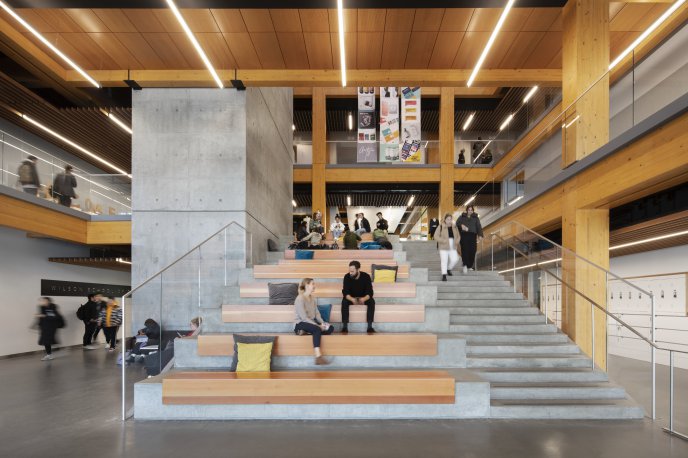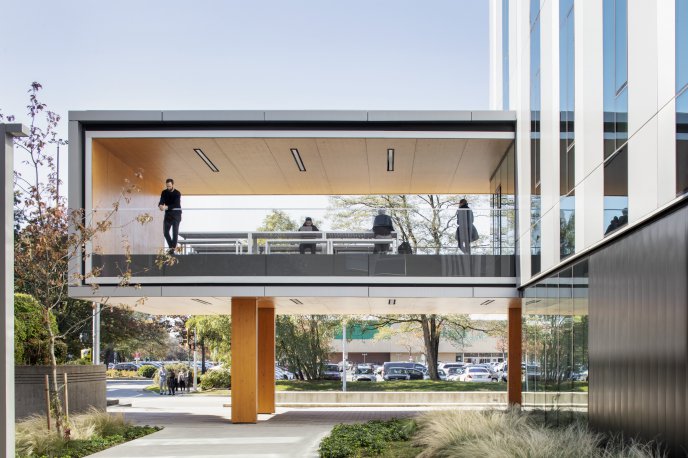Location: Richmond, B.C.
Architect: KPMB Architects + Public: Architecture + Communication
OAA Design Excellence Awards Finalist
The Wilson School of Design’s vision is to be the preeminent school for the technical fashion design industry on the west coast and to fuel the local economy by cultivating a steady pool of talent and expertise in the fields of graphic design, interior design, fashion marketing, and fashion technology. The broad scope of work required the design and delivery of an inclusive platform for interdisciplinary exchange, and the creation of a signature architecture for Kwantlen Polytechnic University (KPU). The architectural team, comprising an association of a national and local firm, provided full, integrated architectural services through all phases for the 6,000-m2 purpose-built academic facility.
Jane Jacobs observed that “new ideas need old buildings.” The design, based on the flexible loft structures of industrial warehouses, is robust and rational in its plan grid. The integration of form with the school’s sustainability objectives resulted in an advanced wood and concrete composite structure wrapped in a high-performance glazed envelope. The building is inherently flexible to create a platform that supports creativity by enabling many different forms of occupation, over a semester or across generations. High ceilings, ample natural light, expansive views, and fresh air provide student designers the space to dream, explore, test, create, and collaborate.
As a signature gateway to KPU’s Richmond campus, the new Wilson School of Design represents a significant contribution to the vision and development of the Metro Vancouver region. In a suburban neighbourhood still dominated by cars and parking lots, the design represents a major step toward a healthier urban fabric. The extended horizontal frame on the second floor facing west is located on axis to the Landsdowne Sky Train. The building functions as a new gateway that dresses the stage for the future transformation of Richmond’s Lansdowne Mall into a vibrant mixed-use community.
Located in Richmond, B.C., in the delta of the Fraser River, the LEED Gold certified design is climate-responsive and site-specific. The structure addresses the high water table, infirm soils, and seismic considerations. Average temperatures are hospitable, precipitation levels are high, and winds shift rapidly from east to west over the day. A taut, glass curtain wall with operable windows wraps the wood structure. Each facade is uniquely detailed for optimal natural light, and to mitigate solar gain and glare. The central atrium acts as an exhaust plenum and concrete floors provide radiant heating and cooling.

Image Credit: Adrian Williams

Image Credit: Adrian Williams

Image Credit: Adrian Williams